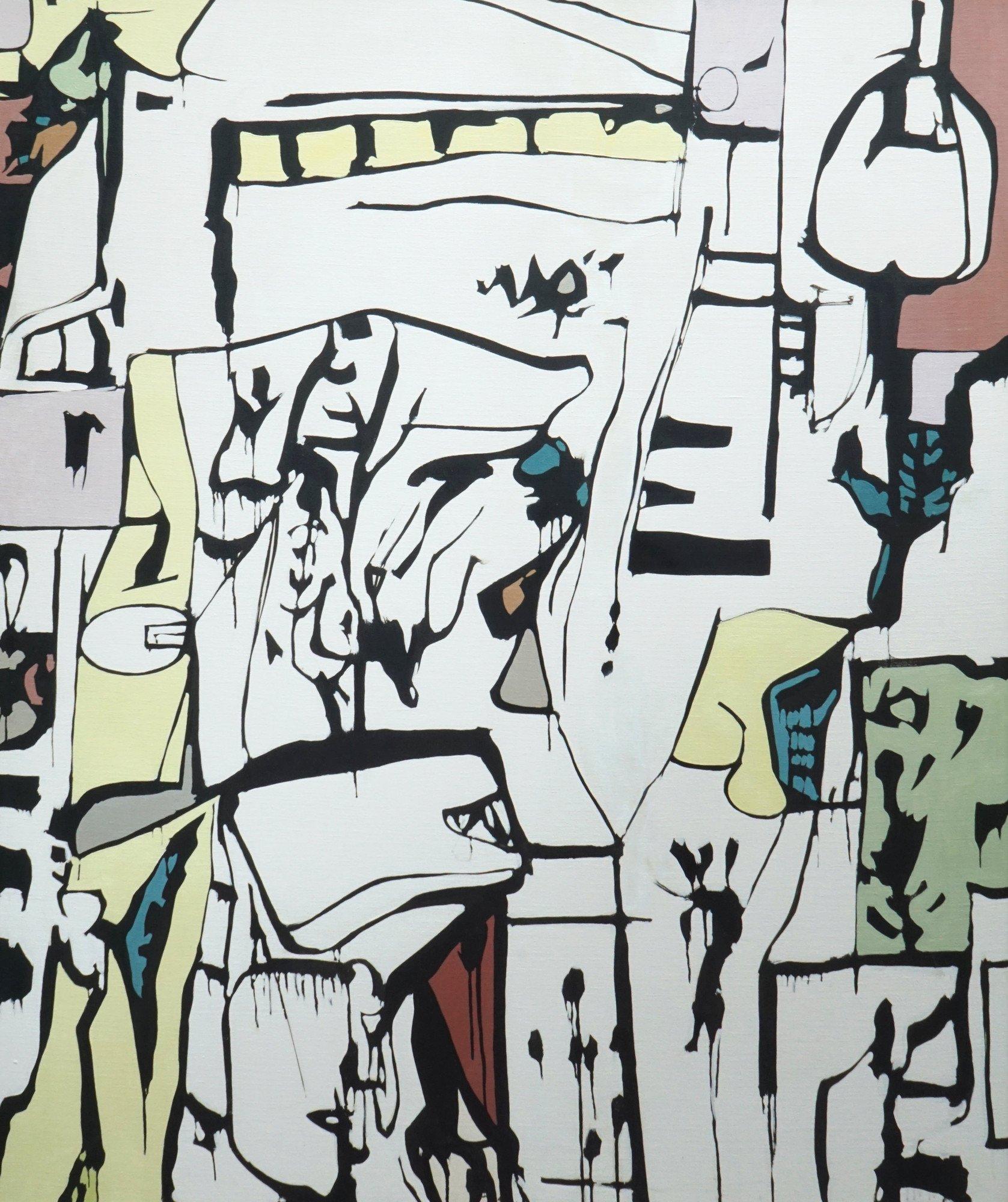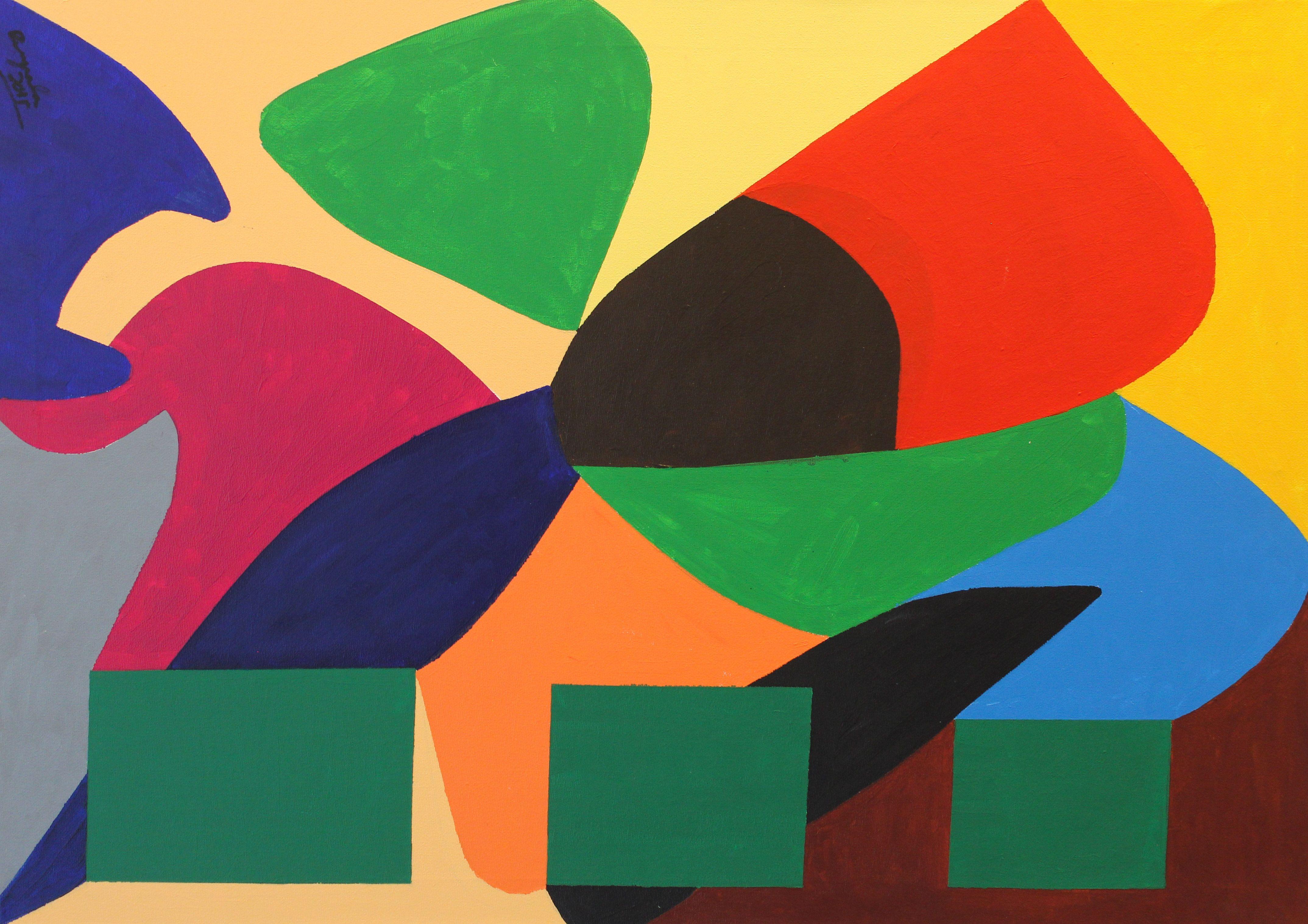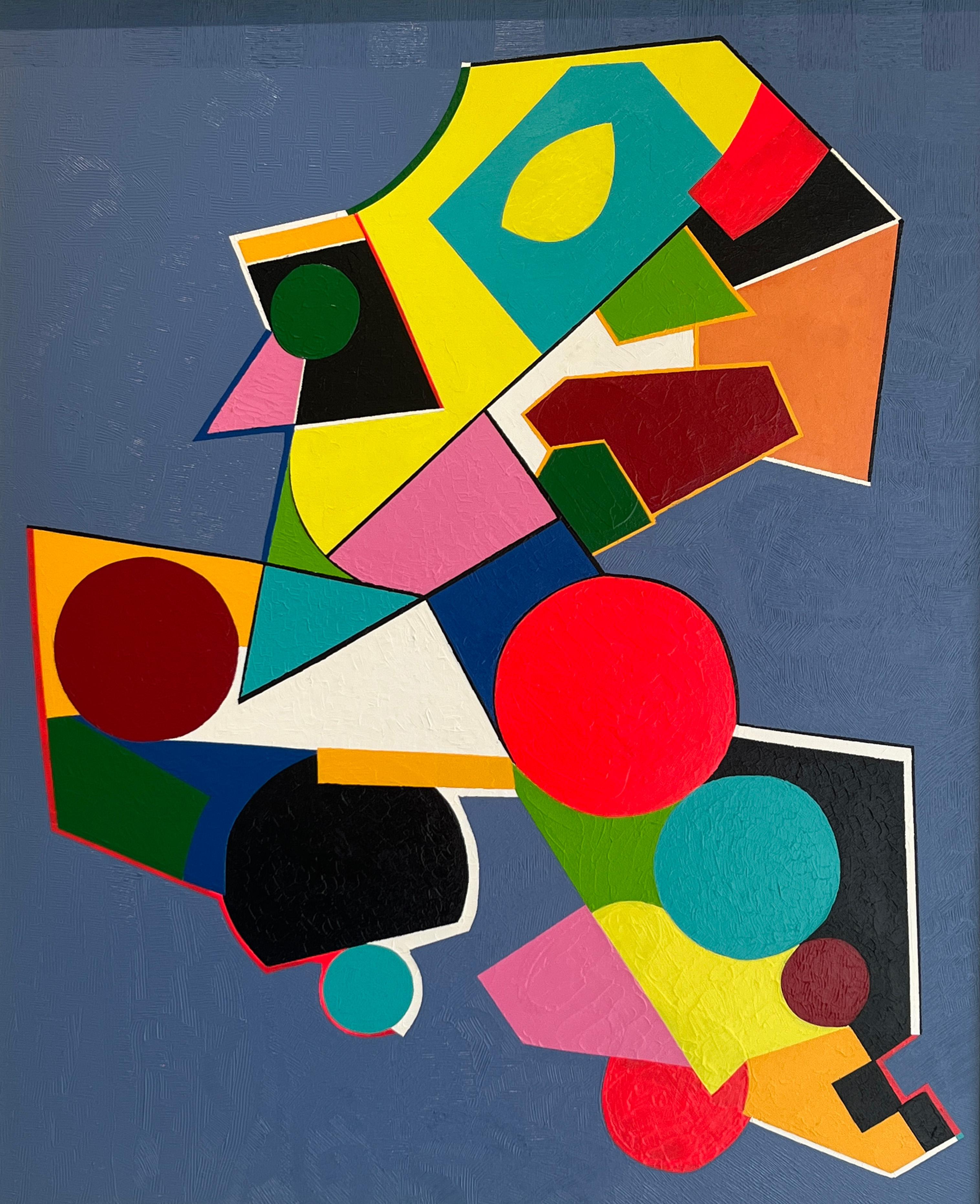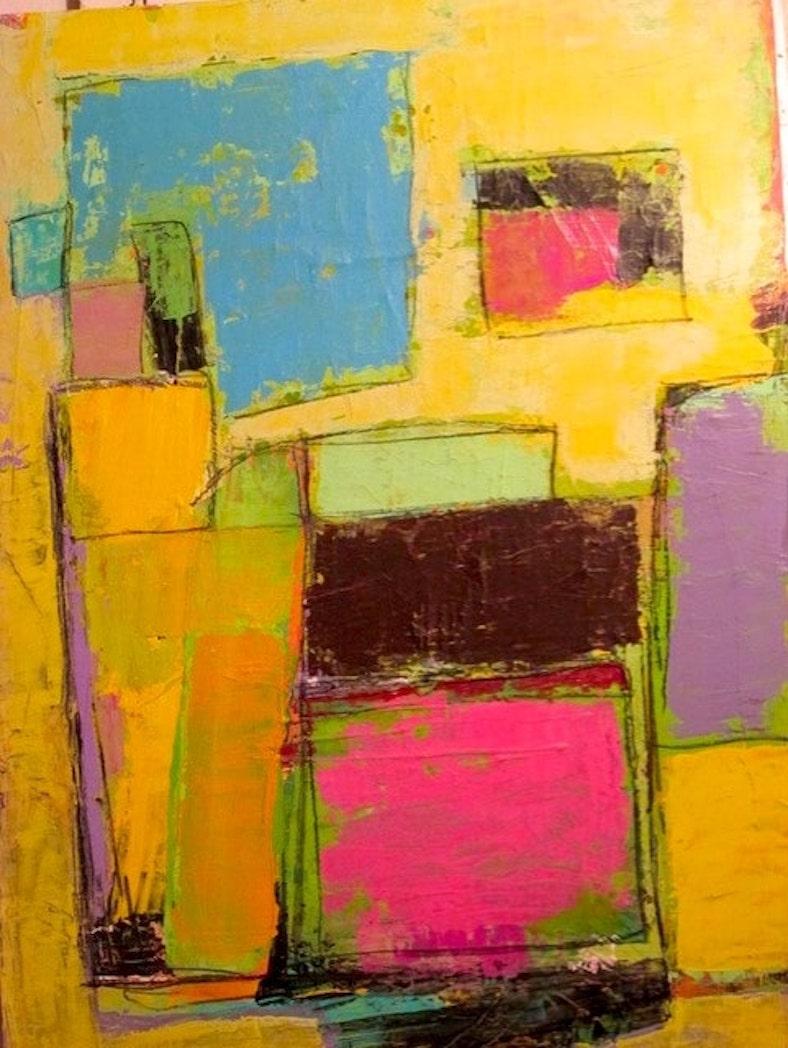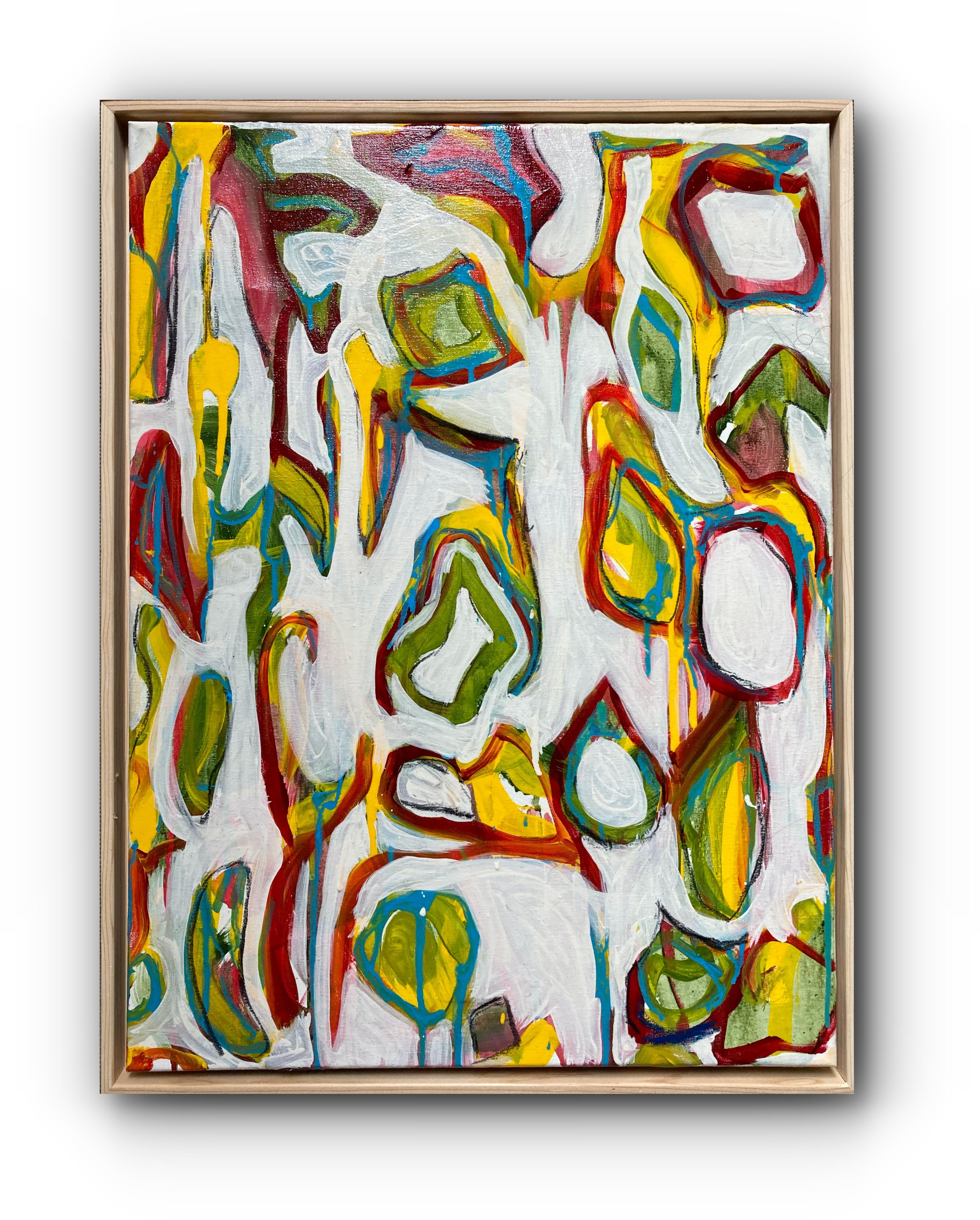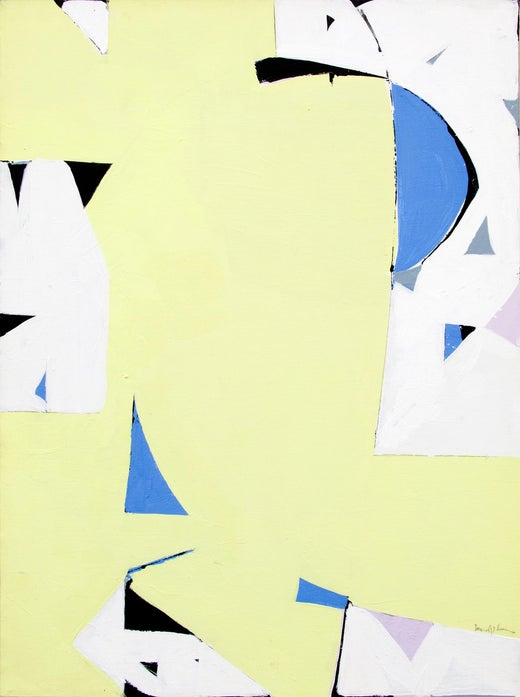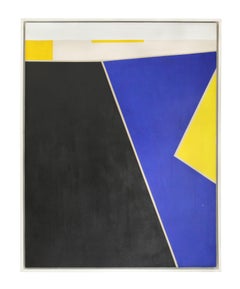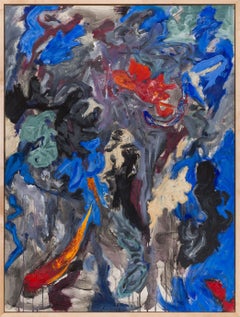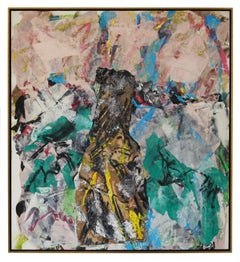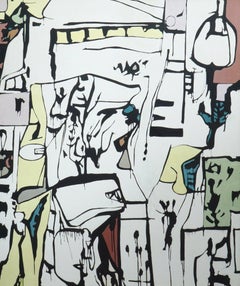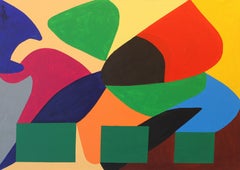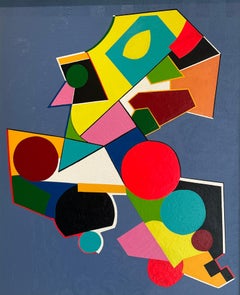Items Similar to Garden #8 1/2-C
Want more images or videos?
Request additional images or videos from the seller
1 of 7
Beatrice MandelmanGarden #8 1/2-Cca. 1994
ca. 1994
$25,000
£18,942.24
€21,734.72
CA$35,179.04
A$38,671.44
CHF 20,323.93
MX$469,612.11
NOK 253,535.97
SEK 240,207.50
DKK 162,211.72
About the Item
Waterline Fine Art, Austin, TX is pleased to present the following work:
Diptych, acrylic on canvas. Signed lower right. Two canvases, joined along vertical stretcher on verso.
40 x 60 in.
41 x 61 in. (framed)
Custom framed in maple.
Provenance
Estate of Beatrice Mandelman
203 Fine Art, Taos, NM
A certificate of authenticity issued by the Mandelman Ribak Collection at the University of New Mexico Foundation will be provided with this work.
Beatrice Mandelman was born on December 31, 1912 in Newark, New Jersey. At age 12, she began taking classes at the Newark School of Fine and Industrial Art, subsequently attending Rutgers University, the Newark School of Fine and Industrial Art, and the Art Students League in New York.
In 1935, Mandelman was employed by the Works Progress Administration (WPA), first as a muralist and then as a printmaker with the Graphic Division of the New York Project. One of the original members of the Silk Screen Unit under Anthony Velonis, she worked until the disbandment of the WPA in 1942. During this period, she was associated with numerous New York School artists including Louis Lozowick, Willem de Kooning, Arshile Gorky, Jackson Pollock, and Stuart Davis.
Mandelman married fellow artist Louis Ribak in 1942, and two years later they traveled to Santa Fe, NM to visit his teacher and mentor, the artist John Sloan. Finding Santa Fe congested, they took the train along the Rio Grande and a stagecoach up to Taos and decided to settle there. An impulsive and inspired move, it was a decision that would effectively remove them from mainstream art involvement, for which Santa Fe had become an important outpost in the west. While Taos was a well-known within the art community, there were no galleries exhibiting modern art. This changed later in the decade, with an influx of new artists arriving from New York and California. Some of these artists would come to be known collectively as the “Taos Moderns” - a group that included Mandelman and Ribak, in addition to Emil Bisttram, Ed Corbett, Agnes Martin, Oli Sihvonen, and Clay Spohn.
An intensely dedicated painter, Mandelman leveraged the isolation of northern New Mexico to explore and develop a style that was distinctly her own. Inspired by the light, local color, landscape, and the confluence of diverse cultures in Taos, her work flourished.
In 1948, Mandelman moved to Paris for a year to study under Fernand Léger, and during this time she befriended Francis Picabia. While she was in Paris, Ribak purchased a sprawling adobe house, and when she returned they created an exhibition space in their living room, which they called Gallery Ribak. The couple organized mini-exhibitions there, including a three-person show for themselves and their friend Agnes Martin in 1955.
During her lifetime, Mandelman exhibited at the Chicago Art Institute, the Dallas Museum of Art, the National Gallery of Art, the Museum of Modern Art, and the Whitney Museum of American Art. Today, her works are included in public collections across the United States, including those of the Art Institute of Chicago, the Denver Art Museum, the Metropolitan Museum of Art, the National Gallery of Art, and the Smithsonian American Art Museum.
Beatrice Mandelman died on June 25, 1998 in her Taos home. In the last months of her life, she produced the 31 works in the Winter Series. Over the span of seven decades, Beatrice Mandelman produced a body of work consisting of hundreds of paintings, prints, collages, and works on paper.
Sources: Mandelman-Ribak Foundation; Rosenberg & Co.
- Creator:Beatrice Mandelman (1912-1998, American)
- Creation Year:ca. 1994
- Dimensions:Height: 40 in (101.6 cm)Width: 60 in (152.4 cm)
- Medium:
- Movement & Style:
- Period:
- Condition:Overall excellent and stable condition. Inquire for additional details.
- Gallery Location:Austin, TX
- Reference Number:1stDibs: LU2287211547622
Beatrice Mandelman
Beatrice Mandelman Studied at the Arts Student League and soon established herself in the New York art scene. In 1944 she and her husband, Louis Ribak arrived in New Mexico. The two of them founded the Taos Valley Art School and helped create the Taos Art Association. Mandelman’s kaleidoscopic abstractions display a wide range of influences, from stained-glass windows to the School of Paris, from Native American art to the New York School. She was a sophisticated and capable painter. ©David Cook Galleries, LLC
About the Seller
5.0
Vetted Professional Seller
Every seller passes strict standards for authenticity and reliability
Established in 2020
1stDibs seller since 2023
6 sales on 1stDibs
Typical response time: 1 hour
- ShippingRetrieving quote...Shipping from: Austin, TX
- Return Policy
Authenticity Guarantee
In the unlikely event there’s an issue with an item’s authenticity, contact us within 1 year for a full refund. DetailsMoney-Back Guarantee
If your item is not as described, is damaged in transit, or does not arrive, contact us within 7 days for a full refund. Details24-Hour Cancellation
You have a 24-hour grace period in which to reconsider your purchase, with no questions asked.Vetted Professional Sellers
Our world-class sellers must adhere to strict standards for service and quality, maintaining the integrity of our listings.Price-Match Guarantee
If you find that a seller listed the same item for a lower price elsewhere, we’ll match it.Trusted Global Delivery
Our best-in-class carrier network provides specialized shipping options worldwide, including custom delivery.More From This Seller
View AllAfrican Ancestor
By John Little
Located in Austin, TX
Waterline Fine Art, Austin, TX is pleased to present the following work:
Acrylic and paper collage on canvas. Signed and dated lower left; signed, ...
Category
1970s Abstract Expressionist Abstract Paintings
Materials
Acrylic, Laid Paper
Untitled
Located in Austin, TX
Waterline Fine Art, Austin, TX is pleased to present the following work:
Oil on canvas.
77.25 x 59 in.
79.75 x 62 in. (framed)
Custom framed in a solid hardwood floater, with a matte white finish.
Provenance
Estate of the artist
Hollis Taggart...
Category
1960s Abstract Geometric Abstract Paintings
Materials
Canvas, Oil
Untitled (Savant Series)
Located in Austin, TX
Waterline Fine Art, Austin, TX is pleased to present the following work:
Acrylic on canvas. Initialed and dated verso.
48 x 36 in.
49.5 x 37.5 in. (framed)
Custom framed in a maple floater with a polyurethane clear coat finish.
Provenance
Iannetti Lanzone Gallery, San Francisco
Private Collection, San Francisco
Private Collection, Alameda, CA
Charles Strong...
Category
1980s Post-War Abstract Paintings
Materials
Canvas, Acrylic
Untitled
By Michael Goldberg
Located in Austin, TX
Waterline Fine Art, Austin, TX is pleased to present the following work:
Oil, pastel, and paper collage on canvas. Signed and dated verso.
52.75 x 47.75 in.
54 x 49 in. (framed)
Gilded floater frame.
Provenance
Compass Rose, Chicago
Born Sylvan Irwin Goldberg in 1924 and raised in the Bronx, Michael Goldberg was an important figure in American Abstract Expressionism, who began taking art classes at the Art Students League in 1938. A gifted student, Goldberg finished high school at the age of 14 and enrolled in City College. He soon found New York’s jazz scene to be a more compelling environment, and he began skipping classes in favor of the Harlem jazz clubs near campus. Goldberg’s love of jazz would become a lifelong passion and a key component to his approach to composition in his paintings.
From 1940 to 1942, like many of the leading artists of the New York School, Goldberg studied with Hans Hofmann. In 1943, he put his pursuit of painting on hold and enlisted in the U.S. Army. Serving in North Africa, Burma, and India, Goldberg received a Purple Heart and a Bronze Star before being discharged in 1946. After his service, he traveled and worked in Venezuela before returning to the United States, settling back in New York and resuming studies with Hofmann and at the Art Students League.
Living downtown and frequenting the Cedar Bar, Goldberg befriended many of the artists of the New York School. In 1951, his work was included in the groundbreaking Ninth Street Show, co-organized by Leo Castelli, Conrad Marca-Relli, and the Eighth Street Club, and featuring the work of - among others - Hofmann, Jackson Pollock, Willem de Kooning, and Franz Kline. In 1953, the Tibor de Nagy...
Category
1980s Abstract Expressionist Abstract Paintings
Materials
Canvas, Pastel, Mixed Media, Oil, Handmade Paper
Untitled
Located in Austin, TX
Waterline Fine Art, Austin, TX is pleased to present the following work:
Oil on canvas. Estate stamped and numbered verso; initialed “SF22” verso.
48.25 x 34.25 in.
49.25 x 35 in. (framed)
Custom framed in a solid maple floater.
Provenance
Estate of Samuel Feinstein
McCormick Gallery, Chicago
Samuel Lawrence...
Category
1950s Abstract Expressionist Abstract Paintings
Materials
Canvas, Oil
Edge
Located in Austin, TX
Waterline Fine Art, Austin, TX is pleased to present the following work:
Oil on board. Signed and dated lower right and verso, titled verso.
36.25 x 48 in.
40.5 x 52.25 in. (framed)
Framed in contemporary silver, tiered floater frame.
Dennis Eugene Norman Burton was a Canadian modernist who was born in Lethbridge, Ontario. He attended the Ontario College of Art from 1952 to 1956, and worked for the Canadian Broadcasting Corporation (CBC) as a graphic designer until 1960.
Inspired by a 1955 exhibition of the “Painters Eleven” at Toronto’s Hart House, as well as American Abstract Expressionist artists such as Robert Motherwell, Jack Tworkov, and Willem de Kooning, Burton shifted his focus toward abstraction in the mid-1950s.
Burton showed with the famed Isaacs Gallery in Toronto, becoming one of the youngest members on the gallery’s roster. A talented musician, he also played saxophone in the Artist’s Jazz Band in Toronto - a pioneering Canadian free-jazz group...
Category
1950s Abstract Expressionist Abstract Paintings
Materials
Masonite, Oil, Board
$16,000
You May Also Like
Garden, Abstract Expressionist Mid-Century Modern geometric work
By Richard Andres
Located in Beachwood, OH
Richard Andres (American, 1927-2013)
Garden, 1972
acrylic on canvas
signed, dated and titled verso
59.5 x 50 inches
Richard Andres was born in Buffalo, New York in 1927. A graduate of the Cleveland Institute of Art in 1950, he was immediately drafted and served for two years in the army as a mural painter. He received his Master of Arts from Kent State in 1961. A frequent exhibitor at galleries and museums and winner of multiple May Show prizes, Andres taught art in the Cleveland Public Schools for 28 years, as well as teaching the University of Buffalo, the Cleveland Institute of Art and the Western Reserve University.
Very little in Richard Andres’ childhood would have predicted his love of classical music, mid-century-modern architecture and certainly not his lifelong passion for art and in particular abstract art. Richard’s father, Raymond, had no more than a third-grade education, and his mother, Clara, was one of thirteen children – only three of whom lived into adulthood and none of whom attended high school.
They lived, when Richard was a boy, in a dingy area of Buffalo, NY in a walk-up apartment situated above a tavern. Raymond and Clara supplemented the income from their factory jobs in the bar downstairs with Raymond playing ragtime on the piano and Clara serving drinks. This often left Richard and his two older brothers at home alone to fend for themselves. The two older boys, Raymond and Russell, were - unlike Richard- rather rough and tumble and entertained themselves with stickball, boxing and the like. Richard, on the other hand, from a very young age liked to draw, or better yet even, to paint with the small set of watercolors he received for Christmas one year. Paper, however, at the height of the depression, was hard to come by. Luckily, Clara used paper doilies as decoration for the apartment and Richard would contentedly paint and then cut up doilies, gluing the pieces together to create collages.
At eight-years-old, he discovered the Albright-Knox Museum (then known as the Albright Art Gallery) and spent several hours a week there studying the paintings. He was particularly fond of Charles Burchfield‘s landscapes, enamored with their ‘messiness’ and thinking that they somehow captured more ‘feeling’ than works he was previously familiar with. For his tenth Christmas, he asked for and received a ‘how-to’ paint book by Elliot O’Hare. Through this self-teaching, he assembled the portfolio needed for acceptance to Buffalo Technical High School where he studied Advertising Arts. In his Junior year, he was encouraged to enter a watercolor painting, “Two Barns,” in the national 1944-45 Ingersoll Art Award Contest and was one of twelve grand prize winners – each one winning one hundred dollars. More importantly the painting was exhibited at the Carnegie Institute Galleries, which resulted in his winning a national scholarship to the Cleveland School of Art (The Cleveland Art Institute).
He flourished at the art school under the tutelage of faculty members such as Carl Gaertner, as well as that of visiting artists such as William Sommer and Henry George Keller. He would say in later years that Gaertner, in particular, influenced his attitude toward life as well as art. “Gaertner,” Andres said, “believed that there was no need to be a ‘tortured artist’, that an artist should rather enjoy beauty, family, and life in general.” Free to spend his days as he chose, he wandered the Cleveland Art Museum for most of the hours he was not attending classes or painting; the remaining time was spent drinking coffee at a local hangout with art school friends – which is where he met fellow Henry Keller scholarship winner, Avis Johnson. Richard was immediately smitten with Avis, but being rather shy, it took him the entire summer of 1948 to build up his courage to ask her out. Over that summer he ‘thought about Avis’ and worked in a diner to save money. He also used the hundred-dollar prize money won in High School to visit the first Max Beckmann retrospective in the United States at the City Art Museum in St. Louis. Over a half century later he spoke of that exhibit with a reverence usually reserved for spiritual matters, “I walked in and it was like nothing I had ever seen before... the color...It just glowed.”
Returning to campus in the Fall, the first thing he did was go to the coffee shop in hopes of finding Avis. He did, and she, upon seeing him, realized that she was also smitten with him. They quickly became known as ‘the couple’ on campus, and a year later, with Richard being drafted for the Korean war, they were quickly married by a Justice of the Peace, celebrating after with family at Avis’s Cleveland home. As a gift, faculty member John Paul Miller...
Category
1970s Abstract Expressionist Abstract Paintings
Materials
Acrylic
JARDIN, Painting, Acrylic on Canvas
Located in Yardley, PA
ACRYLIC PAINTING IN WOODEN FRAME, ON SUPPORT OF FABRIC. IS PROVIDED WITH A VARNISH LAYER TO SAVE FROM DUST AND DIRT :: Painting :: Abstract :: This piece comes with an official ce...
Category
2010s Abstract Abstract Paintings
Materials
Acrylic
El Jardín de la simulación
Located in BARCELONA, ES
In this work, I evoke a memory from my childhood that combines beauty, loss, and meaning. A friend of my mother gave her a pair of parakeets that fascinated me with their vibrant son...
Category
2010s Abstract Geometric Abstract Paintings
Materials
Acrylic, Canvas
Colorful Abstract painting by Arnold Weber 1968
By Arnold Weber
Located in Long Island City, NY
Artist: Arnold Weber, American (1931 - 2010)
Title: Colorful Abstract
Year: 1968
Medium: Oil on Canvas, Signed, titled and dated l.l.
Size: 32 x 44 in. (81.28 x 111.76 cm)
Category
1960s Abstract Geometric Abstract Paintings
Materials
Oil
Enchanted Garden : abstract painting
Located in New York, NY
Abstract work of art by New York artist Anthony Polizzi.
To Polizzi the end product is not the principal focus, it is purely a human expression to fin...
Category
2010s Abstract Geometric Abstract Paintings
Materials
Acrylic
The Secret Garden (Abstract Contemporary Painting, Framed)
By G. Campbell Lyman
Located in New Orleans, LA
(Comes professionally framed in a solid maple floater frame, ready to hang)
Artist's Statement
"This series of intensely colorful paintings was begun a couple of years back in reaction to the gray oppressive weight that had descended like a pall on the American scene. I wanted to make paintings about nothing but pure delight, in honor of the fact that beneath the fog of germs and political antagonism, we still eat, laugh, love and if we're wise, acknowledge how spectacularly fortunate we are -- at least for now, in this time and place, despite the problems. For me, the colors, forms and brushstrokes here feel exuberant without suggesting an unnerving chaos. I have purposely used unlikely color combinations that despite their dissonance seem to work together. I don't feel this is a time to be making brooding works that reflect the problems we are working our way through; we all know about this. On the contrary, I think it's a time for art...
Category
2010s Abstract Expressionist Abstract Paintings
Materials
Lacquer, Charcoal, House Paint, Oil, Acrylic
$980 Sale Price
30% Off
More Ways To Browse
Vintage Industrial Art
Francis Picabia
Modern Painting 40 X 60
Paintings From Taos Nm Artists
Taos Modern
Adobe House
Clay Spohn
40x40 Painting
Morris Louis
Pink Flamingo
Mid Century Abstract Impasto Paintings
Nicolas De Stael
Carlton Hotel
Geometric Collage
Abstract Art Earth Tones
Painting Green And Yellow
Michael Red
Wichita Art
